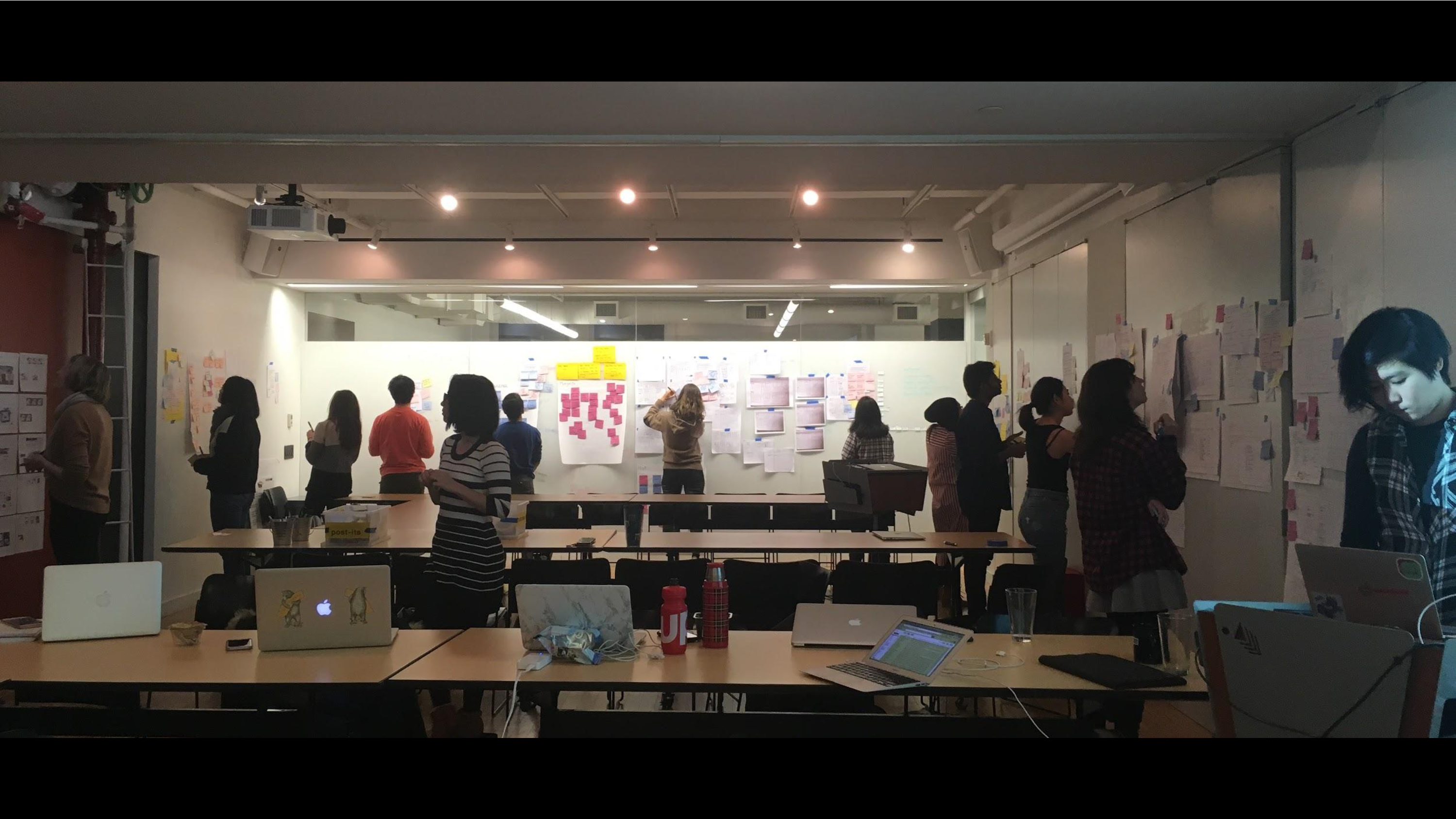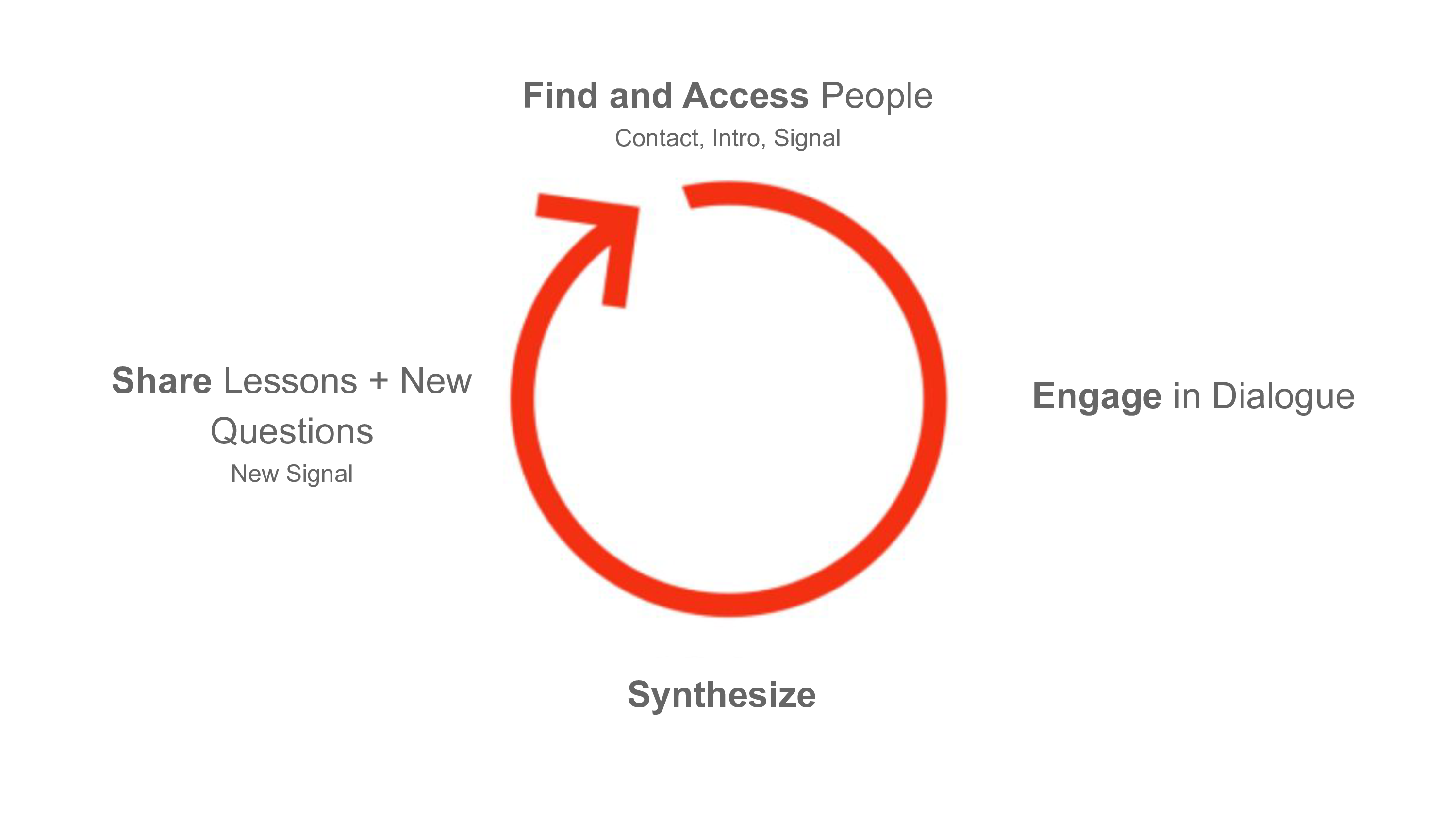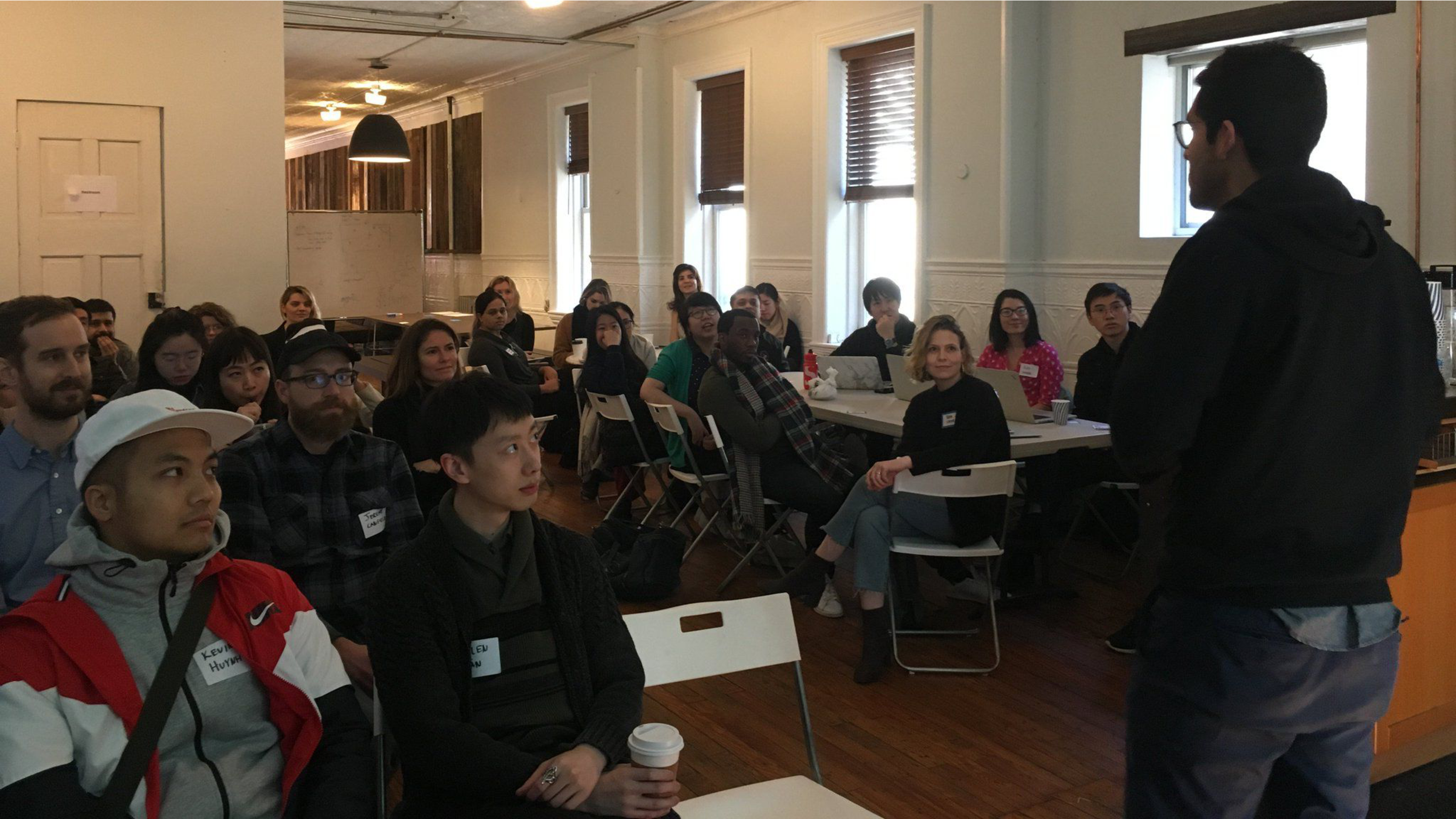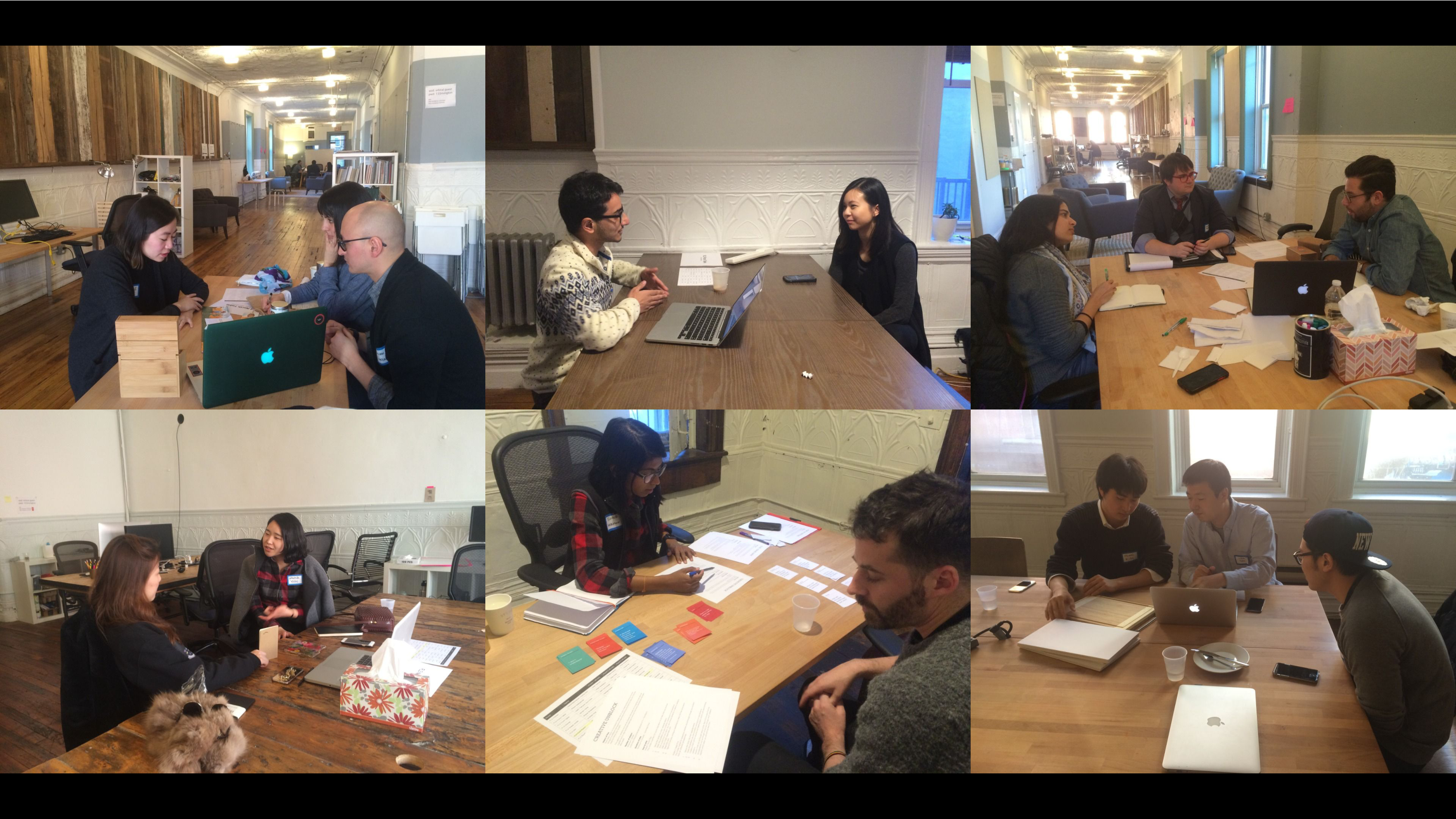Phase 2: Prepare
It is at this point in the course that we (finally!) officially introduce the $1K Challenge. The wording we use is:
Design, launch and complete a crowdfunding campaign that benefits a community you’ve worked with over the course of the semester. The campaign should raise at least $1,000 from 50 different backers.
―$1K Challenge , Entrepreneurial Design, 2018
This part of the course is the most treacherous for students and instructors alike. To impose enough structure to push students through to the other side, we frame progress as a series of gates that they move back and forth between.
Ideate
It takes real motivation to get through all the obstacles on the journey to launch, so everything is easier if students are working on something that they truly care about. We’ve often had to reject people’s ideas when it’s clear that they are trying to impress or pander to us, or when they are trying to pick something that seems "easy to do". Students don't always come into the program believing that their own ideas and interests are worth pursuing.
At this phase, students may know exactly what they want to work on, or they may be asking questions like:
- "What should I do?"
- "Is X a good idea?"
- "Can I do Y?"
They may also have no leads at all.
On day one of the Prepare phase, we take the students through a considered ideation process to help them uncover their fledgling ideas. We’ve learned that without a process in place, students can waste a lot of time wallowing in self-doubt because they didn't find an immediately appealing idea.

Our 2018 cohort at SVA runs through our ideation exercise—we take advantage of our huge classroom to give each student plenty of room to brainstorm, then rotate the students around the room.
By the end of this process, the student's thinking is at approximately the fidelity level of:
- "I like nudibranchs,"
- "I’m interested in restorative justice," or
- "I want to do something around homelessness."
This may feel awkward for students because they’ve been trained to get to certainty, but just finding a direction to move in is sufficient for getting a sense of who they’ll need along the way. They’re ready to explore their idea(s).
Explore
"Explore" connotes an open-ended process, but once again, there needs to be some structure or students could get hopelessly stuck.

Our core exploration loop consists of: finding and accessing people, engaging in dialogue, synthesizing learnings, sharing lessons and new questions back out, and repeat. (Modified from SVA IxD alum Tom Harman's wonderful piece Introducing BuzzFeed’s Design Process)
Our guiding principle throughout the Explore phase is that we move our ideas forward through dialogue. In some cases, students know exactly who they need to speak to, and may just need some help figuring out how to reach out.
| Can Find | Can’t Find | |
| Can Access | Contact Directly | Launch a Signal |
| Can’t Access | Get an Intro | Launch a Signal |
If a student can find and access the people that they need, they can just reach out to them directly via email, tweet, call, text. If they can find the people that they need but don’t have direct access, they can figure out how to leverage their network to get an introduction.
But if they can’t find the people they need, they may need to launch a signal to make it easy for their network to help them.
In the best case scenario, launching a signal starts an iterative process that takes the student from one conversation to the next, enabling them to refine their idea along the way. The student might decide they need to go further, or that their idea isn’t very good, or that they need to switch directions. Sometimes, they might even need to go back to the ideation stage if they realize that they’re not all that interested in their idea after all. Even if it may not feel like it to the student, all of this is progress.
The worse (and far more common) scenario is that the student is stuck and not moving at all, wasting precious time being paralyzed. Stuck students require help, and that help starts with a reframing: stuckness is just a symptom of not having enough information.
At this point, thinking harder isn’t going to get the student anywhere. Instead, remind them of the process, and repeat it until they get unstuck:
- What information are they missing?
- Who is likely to have access to that information?
- What signals can they make that will get them access to those people?
- Who can they share this signal with?
The goal of the Explore phase is to help the students get to a point where they can articulate their direction succinctly.
If they can tell us: "I want to create [thing] for [community]," they’re ready to move on to the next phase.
Express
Now that the students can articulate what they’re working towards, what they need is a container for their ideas. This container should prompt them to flesh out the details of their ideas, tease out the choices they’ll need to make, and commit them to hard decisions that will shape their project.
Ideally, it should also feel like a safe space to iterate on their ideas while they’re fragile and new. Once the ideas are in the container, they can be molded, critiqued, and shared more easily.
As instructors, it’s our job to find the best container for our students and our course—to impose the constraints that they don’t necessarily know they need to help move their ideas along.
There are a lot of containers we could use for this phase (e.g. a slide deck, a business model canvas, an Amazon-style "Working Backwards" press release) but we have found that the Kickstarter project draft actually works perfectly for our purposes.
Filling out a Kickstarter project draft requires the student to think through the narrative for their project, the actual resources they will need to make the project happen, and the engagement model for potential supporters. As a bonus, it’s all "real" work that will actually see the light of day when the project launches.
Another benefit of using Kickstarter as the container is that we can take advantage of its large ecosystem: we can draw on past and current projects as examples, and share out guides and post-mortems from the community as teaching materials.
The challenge of this phase is that of pinning a shifting, amorphous set of thoughts and potential plans in the student’s brain into a fixed form.
It is a time to surface and attempt to address flaws in the idea, to let go of alluring but nonessential parts of the plan, and to face the real risk that other people do not understand or agree with their intentions.
It is a frustrating and often painful part of the journey for many students—confronting the gulf between their ideas and reality will make some of them want to abandon their work and start on something new.
It is our responsibility as instructors to help them figure out the difference between a project that genuinely needs to be abandoned due to fatal flaws, and those that just need some tenacity to get off the ground.
Refine
At this stage, the students probably need an editor.
First-time creators have a hard time with scope. For many, it’s natural to dream the biggest thing possible without realizing how much risk or work they’re taking on. However, they may also be experiencing decision fatigue—it’s taken a lot of hard choices to just get to this stage, and facing down even more may feel insurmountable.
What they need is a fresh perspective who can help them get out of their own heads and figure out their starting point.
Because our students are often tired of our opinions by this point, we call in outside support with an event called Product Sessions, which we schedule about two weeks ahead of Launch. It’s a day-long event where we invite our friends with relevant experience to spend a Saturday with the students, splitting up so that each student has three back-to-back 45 minute sessions, each with a different advisor.


Scenes from Product Sessions past.
Though it can be a lot of work to put together, Product Sessions has a few powerful benefits that have convinced us to run it year after year:
Motivation. Presenting to strangers (even if they’re our friends) is intimidating enough that it pushes the students to get something ready for viewing.
Coverage. Our network has expertise in things we don’t know anything about.
Perspective. The students need to hear things from other people, even if they’re saying exactly what we’ve been telling them all semester.
Network. The side benefit of Product Sessions is that the students now have 3 additional people who are invested in their success, who in turn have their own audiences as well.
By talking to 3 different people, each student is likely to hear something really useful that will send them down the right path towards launch. They then have two weeks to iterate and refine based on the feedback.
Product Sessions has gotten easier to put on with practice and tools, but wrangling enough advisors who are willing to volunteer their time on Saturday is still a challenge. If this seems like too much work, just remember that the key thing is making it easy for the students to talk to new, experienced people.